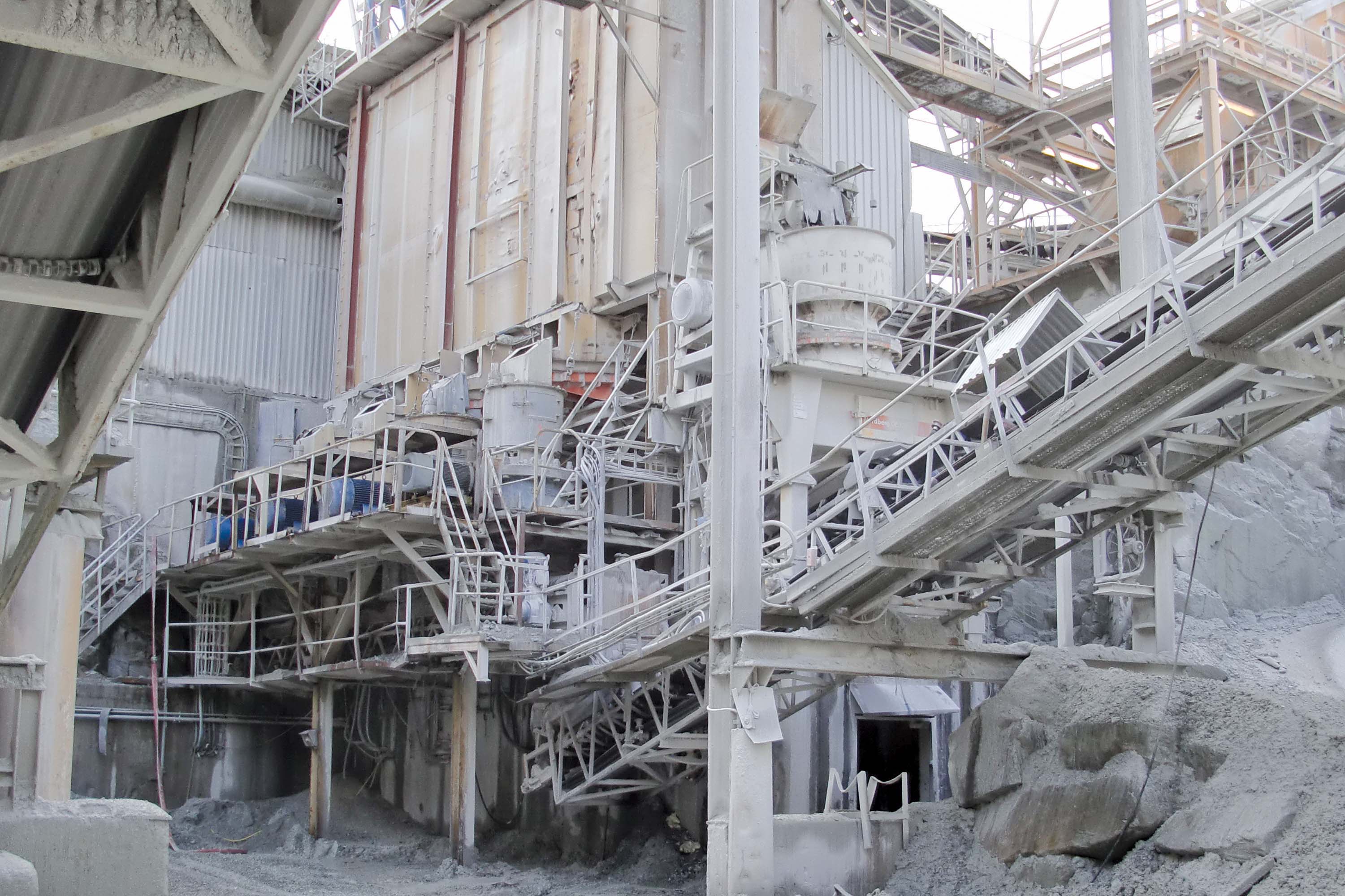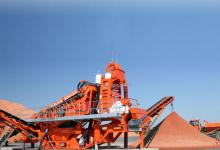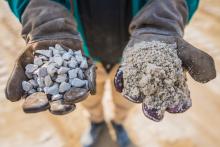
Hugo Pettingell, of the Aggregates Institute, discusses how savvy use of equipment can help quarrying professionals cater for changing aggregate market demand.
The market for traditional quarry products in Western Europe has changed significantly over the last couple of decades, a trend that is set to continue with the decline of large infrastructure projects. A contributory factor is the more frequent use of recycled products for non-critical purposes, which means that the once-obligatory supply of fill materials from quarries is no longer economically viable due to subsidised competition. Another, in the UK at least, is the effect of the Aggregates Levy.
In many cases the demand for bulk, graded materials has all but disappeared. Instead, the emphasis has shifted to more closely-specified single sizes, for which older quarry plants are not well-suited, due to either inadequate capacity or basic design shortcomings. Other factors, such as decreased sales of products such as track ballast or kiln stone, can highlight the inadequacies of existing installations.
These inadequacies have various causes. Overloaded screens, sometimes exacerbated by the substitution of screen media for which the screens were not originally designed, can result in non-compliant and inconsistent products. Then again, older crushing technology may not be capable of producing the enhanced shape needed for emerging end uses. Crushing plants dating back to the 1980s and beyond may have been developed piecemeal, leading to odd imbalances, and the old enemy - inconsistency. In short, there is a strong need for careful study of current and future production expectations, and analysis of the changes that might be needed to existing processes.
The problem is two-fold. How do we satisfy the increasing demand for a narrow range of single-size aggregates, while at the same time eliminating – or creating a demand for – those products that are necessarily created during the production process?
In the past, scalpings have found a ready market as fill material or have been tipped in quarries for restoration purposes. Typically 0-40mm or 0-75mm material, poorly shaped and containing weaker stone, tends not to be put through primary or secondary crushers, even if clean and dry (unlikely in northern latitudes). However, this could be seen as a waste of good stone, already reduced - very cheaply - to useable size. Processes such as washing, shape enhancement using VSI crushing, and final screening, can yield a range of quality aggregates including manufactured sand.
The sales of larger-size products, which once justified a quarry’s existence, can easily disappear; contracts, or whole industries, can be lost, so once-healthy volumes of track ballast or kiln stone may now need to be added to the feed to secondary and tertiary crushing processes.
Single size demands tend to be concentrated below 20mm in limestone and 14mm in hard stone quarries, with 10mm predominating. This means we need to do a good deal more size reduction than we may have been used to, recirculating almost all 40-20mm and above, together with a proportion of 20mm and even 14mm. At the same time, the need for better particle shape has led to lower reduction ratios, and thus a requirement for increased crushing time. Of course, if we are now increasing our crushing capacity, existing screens may well be inadequate to cope with the extra load. The inescapable truth is that if we want higher quality, more specialised products, we have to accept reduced capacity, or make substantial changes to the process machinery. If we allow that, in practice, the potential capacity of our plant is limited by that of the primary and secondary crushers, plus anything we may be able to rescue from the scalpings, then at the very least we are going to have to look at tertiary and quaternary stage crushing and screening capacity.
Often limestone plants have operated satisfactorily with either secondary impactors or both primary and secondary impactors, with little need for anything more. Now we find the secondary product of 40 or 50mm is coarser than we need, and a tertiary stage is inevitable, whereas the same problem compels the introduction of a quaternary stage or greater recirculation in a hard stone plant consisting typically of compression (cone) crushers. Extra crushers are often added almost as an afterthought, feeding excess production of larger sizes to increase the production of, typically, 10mm aggregates. As well as affecting the load on the screens, this can overwhelm conveyors and limit the overall rate of supply from the secondary stage. If this situation is likely to persist, it is worth considering removing oversized material from the screen feed by means of a selector screen ahead of final screens, and crushing to the required top size earlier in the process. This will have the effect of freeing up capacity on the final screens and their feed conveyors by reducing the overall feed volume and increasing the available area for the remaining separations.
While discussing screen capacity, or the lack of efficiency, of existing vibrating screens, it goes without saying that proper maintenance and regular performance checking are essential if their performance is not to deteriorate. Good mechanical condition, with particular attention to the correct motion and the state of the suspending springs, is often overlooked; in some cases increasing the frequency or amplitude (always consulting the manufacturer first) can lead to worthwhile improvements. Many older screens were designed for woven wire screen cloths, and the fashion for installing synthetic media, involving the addition of weighty proprietary sub-frames, can result in a reduction in capacity. Invariably synthetic media possess less open area than traditional wire, and are likely to be rather heavier when the support structure is taken into account, which may lead to loss of performance. Against this must be set the reduction in maintenance and noise, and in some cases resistance to pegging, claimed for these products, but it may be worth revisiting traditional woven wire, especially in low-abrasion applications, in order to maximise volumes.
Newer style compression crushers are claimed to produce better particle shape, allegedly through increased inter-particle attrition within the crushing chamber. Eccentric throw, rotational speed and crushing chamber design are cited as factors contributing to this effect, but the old rules of keeping crushers properly fed, elimination of feed segregation, and avoiding excessive reduction ratios still hold good. Correct chamber selection for the application is essential and even modifying the chamber profile to optimise the product can be beneficial.
The segregation of feed is a common and often poorly understood factor in inferior crusher performance. Crushers are best fed with a consistent, well-graded feed, which allows the material to flow easily through the entire crushing chamber, achieving reduction and shape improvement by direct compression and inter-particle attrition as it does so. If the feed becomes separated into coarser and finer fractions, as is frequently the case due to stratification on conveyor belts or vibrating feeders or through poor feed chute design, the crusher will receive different feed at different points in the feed opening. In extreme cases this results in packing of fine particles on one side, while the preponderance of coarse particles on the other causes intermittent blockages due to stones interfering and bridging with each other at the entrance to the chamber. All the while, the crusher can appear to be correctly choke fed, while the machine is being stressed due to incompressible packed fines on one side, while the other is nearly empty under a layer of bridged coarse material. Reduction in capacity of 50% is not unheard of, and the detriment to particle shape can be considerable. A further effect is often uneven wearing of the chamber profile, leading to loss of capacity and, again, inferior shaping. A specific search for segregation issues should be part of any plant optimisation process, and a common indicator is fluctuation of crusher power draw or hydraulic pressure at the same frequency as the crusher stroke.
The final major issue to be addressed is the production of sizes that cannot be made into saleable products simply by size reduction; since we can’t stick it back together to make desirable sizes such as 10mm, excess production of crusher dust is often a problem. Even though crushed stone, typically <5mm, has been successfully used as fine aggregate for decades in those places where natural sand is scarce, there is still considerable resistance to it in supposedly more technically advanced markets. There is some justification for this, as very little attempt has been made to “process out” the perceived shortcomings of the material while natural sand has been plentiful, and much of it has ended up as huge piles of waste. Despite the fact that increased concentration on smaller coarse aggregate sizes must necessarily result in ever larger volumes of crushed rock fines, attempts to market it have centred on making it so cheap as to be irresistible, rather than engineering it into a high-quality substitute for dwindling supplies of pit or dredged sands. While there are some types of rock that do not lend themselves to sand production due to harmful content such as expansive clays or high alkali silica reactivity, much of the crusher dust currently sold at below cost, or consigned to waste tips, can be turned into a quality product commanding a premium price.
The usual objections to crushed sand centre around just a few characteristics: without further processing, the residue of crushing for coarse aggregates has a top size of around 5mm; rather a scarcity of particles between 1mm and 100µm: and frequently high sub-100µm content. The usual specification for concrete sand, on the other hand, typically demands about 80% passing 2mm, 35% passing 500µm, and no more than 3% passing 63µm. Clearly, crusher dust is not going to comply. But does it need to? Actually, no. It has long been recognised that much higher levels of microfines can be accepted, and are indeed beneficial in many instances. Particle size distribution tells us little about the performance of sand, since it takes no account of particle shape, which is crucial. Superior particle shape is essential for improving both workability of concrete in the liquid phase, and good packing density for enhanced strength and permeability characteristics. *
Assuming the source rock is suitable, production of crushed sands can be achieved by adjusting the particle size distribution and improving particle shape. Normally it is desirable to reduce the volume of 2-5mm in the grading by recirculation through a suitable crusher, and to extract some of the microfines, although not in order to match the grading of naturally occurring sand, but merely to avoid an excess of particles in the range of the cement grading. Poor particle shape is an inherent problem, especially with products from cone crushers and secondary impactors, since the shape deteriorates markedly as the grain size departs from the setting dimension. Also the very mechanism of crushing does not produce an ideal shape for concrete applications in which mere equidimensionality is not enough. Sharp edges and corners, and deep surface texture, are extremely detrimental to performance, and the need for a rounding and smoothing action leads us almost inevitably to the application of autogenous vertical shaft impact crushing. While we can feed VSI crushers a diet of dry crusher dust and get good improvements to the material characteristics, far better shape can be achieved by including coarser material in the feed. Traditionally VSI’s have been criticised for excessive production of micro-fines (although reduction and control methods are available if needed), but it must be remembered that this is a result of the abrasion and attrition that occurs within the machine, and will be matched by any machine, whether compression or impact, that achieves the same shape improvement in coarse aggregates. With increased recirculation and use of extra crushing processes to achieve product balance, the difference in fines production between VSI’s and cone crushers is much reduced, and we can consider VSI crushing for tertiary and quaternary applications more favourably. This is especially so since all of the VSI product is of superior shape, and sand sizes processed in this way will be much more acceptable.
Much of the foregoing can best be applied to fixed installations, which are more suited to quality production than portable or mobile plant. Yet whatever the style of existing equipment, the trend is towards more intensive processing, and increased capacity at the lower end of the size scale.
But before investing in new machinery it is wise to have a close look at what is already there, to see if we are getting the best out of it. Many plants have untapped potential that can be released through not producing unprofitable sizes, optimising the process, and developing markets for new products.
*Despite the research, the peculiar characteristics of machine sand are not commonly considered. AR5, through its Aggregates Institute, is one organisation seeking to improve this situation with a series of practical workshops on the subject.
Hugo Pettingell is a quarry process specialist with many years of experience working with multinational companies worldwide. His areas of expertise include sand manufacture, VSI crushing,
A Camborne Graduate and Fellow of the








